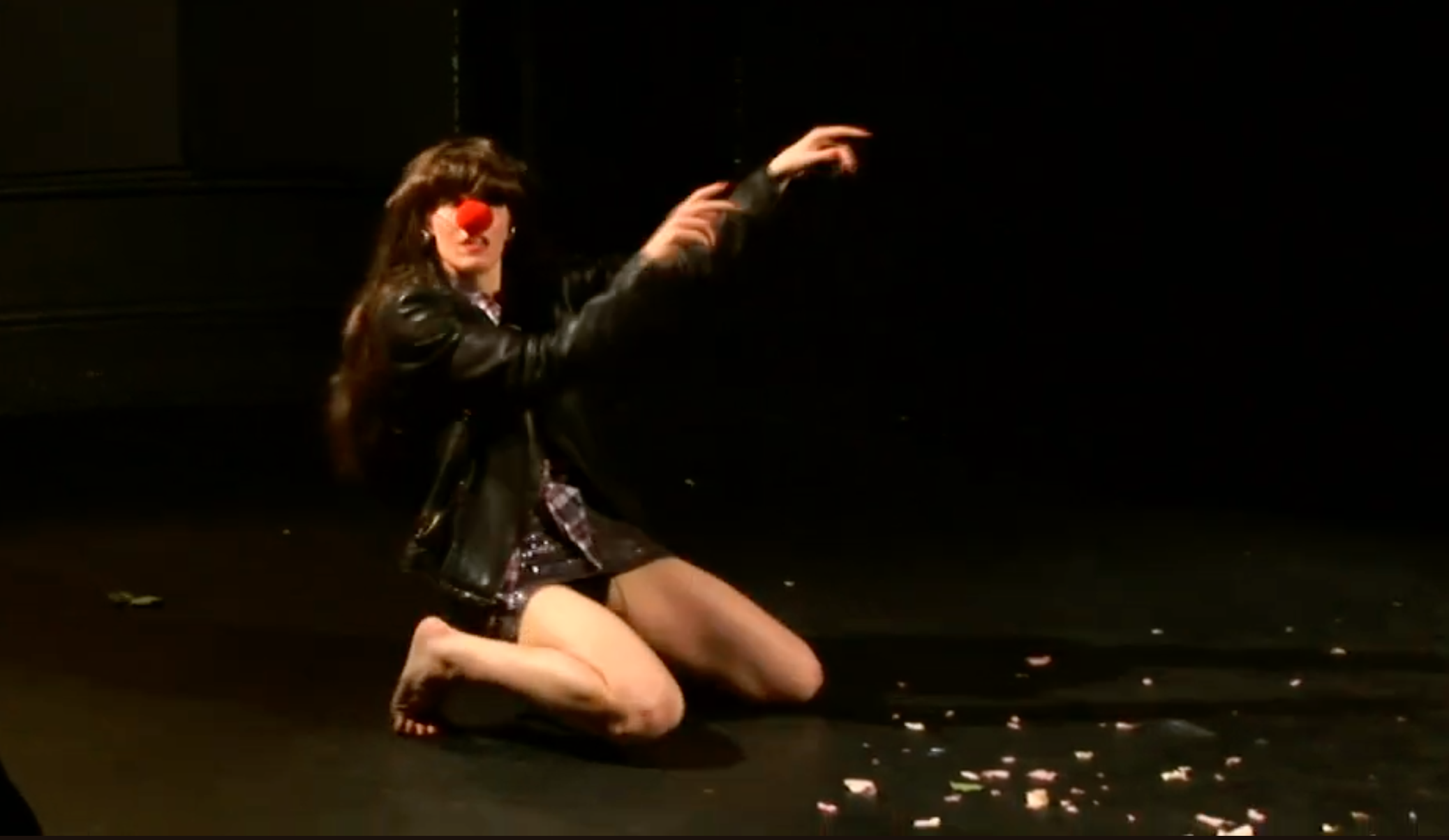Learning from the Fool, and Reclaiming Joy Through Play
A screen shot from my solo, Small Talk 2011, made in collaboration with Wendy Houstoun.
Where are the spaces, as artists, where we can safely and confidently practise playing the fool?
It’s the inner fool, the clown- goofing around, laughing at myself, being laughed at- that was the driver for my DYCP, Reclaiming Joy: comedy as a strategy in socially engaged practice.
In performance, that kind of playfulness has always felt thrilling, creating that beautiful uncertainty of not knowing where you are with someone or something, teetering between humour and darkness. These are the best bits for me, and the essence of what I’m looking to revisit and explore.
I’m contemplating my first move- after all, it’s a ‘once in a lifetime’ opportunity to receive funding to develop your creative practice. Most people respond as if I’ve won the lottery. The pressure is both a help and a hindrance. A help because it’s just me, on my own, so accountability, planning, and structure with funding attached are useful incentives to crack on. A hindrance because developing my practice is about discovery, curiosity, exploration, deep thought, introspection, and excavation; these don’t feel as accessible when pressure and the broader demands of productivity become too weighted.
Back to being playful...
I’ve recently been teaching ‘pro class’ at South East Dance (SED). I keep calling them ‘professionals’ in class to be playful, and luckily, they seem to find it amusing too. We all know the complexities of being a practising professional in any artform right now, and I completely celebrate the commitment of skilled, trained professionals looking to sharpen their tools- something I find hard to make space for.
It’s great for me to be teaching at a professional level again- the way you hold space is very different from a community class or HEI settings. The ‘professional’ brings their dance history, a depth of embodied knowledge, and an ability to work autonomously- taking responsibility for their training, boundaries, and self-care in a creative setting.
That means they don’t need me to hold their hands through class in the same way. I can suggest the terms, create the challenges, step back to observe and absorb more responsively, offer insight or feedback. I get to be the active protagonist or playful provocateur when needed.
For me, that means I can be more playful in my delivery, bringing my clownish nature into the space. And I can feel the desire for it, the relief it brings participants, because the clown welcomes risk and failure.
Learning from the Fool
The fool, as I know and understand it, demands radical honesty and awareness. It invites you to meet yourself as you are. In a performative context, that might manifest through the extremities of being awkward, uncertain, tender, ridiculous, impulsive, and more. There’s a liberation in being able to reveal these qualities.
When I encourage play in a creative space, I’m inviting freedom and connection- to myself, to others, to the truth of the moment. Within community settings there is often more uncertainty and trepidation from participants, and that means holding the space with considered care, empathy, and a neutrality that allows for wobbles to feel validated and supported. Whilst I still invite playfulness, I often hold certain parts of my character in reserve in situations where I have additional responsibility. Around professional artists, I can and must uncover more.
As I talk about in my blog Welcoming the Monkey: Finding Lightness in Heavy Work laughter creates space for fear, trauma, and vulnerability to hold lightness. It keeps energy moving in challenging spaces and within challenging work. My personal experience of laughing at myself or being laughed at helps to soften the inner critic that tells me I should have all the answers and creates space to experiment, to fail and to feel.
A Beautiful Tension
I’m specifically wanting to understand my relationship to humour in both professional and performative contexts, where there lies a beautiful tension between the various parts of my practice. My work has been situated for many years now with trauma-attuned and socially engaged projects that support and hold space for others with sensitivity, consent, and care. On the other hand, the performative fool that I am currently looking to revisit, walks a tightrope- tripping, falling, revealing what’s hidden. At first, they seem opposites- care versus chaos- but my challenge is to make room for both: tenderness and play aren’t separate, humour can be a form of healing, and risk, when held safely, can open us to deeper empathy and truth.
And joy is not a frivolous add-on but a vital act of resistance as much as of expression- especially within practices rooted in care and community. As I touch on in Grateful, Terrified, Excited, many groups I work with are actively looking to connect with joy, play and humour. As I continue my DYCP journey, I’m seeking ways to hold joy, tenderness, risk and vulnerability in the same breath, to find laughter in the cracks of difficult themes, and to trust that by exploring foolishness, I might glimpse something profoundly human.
